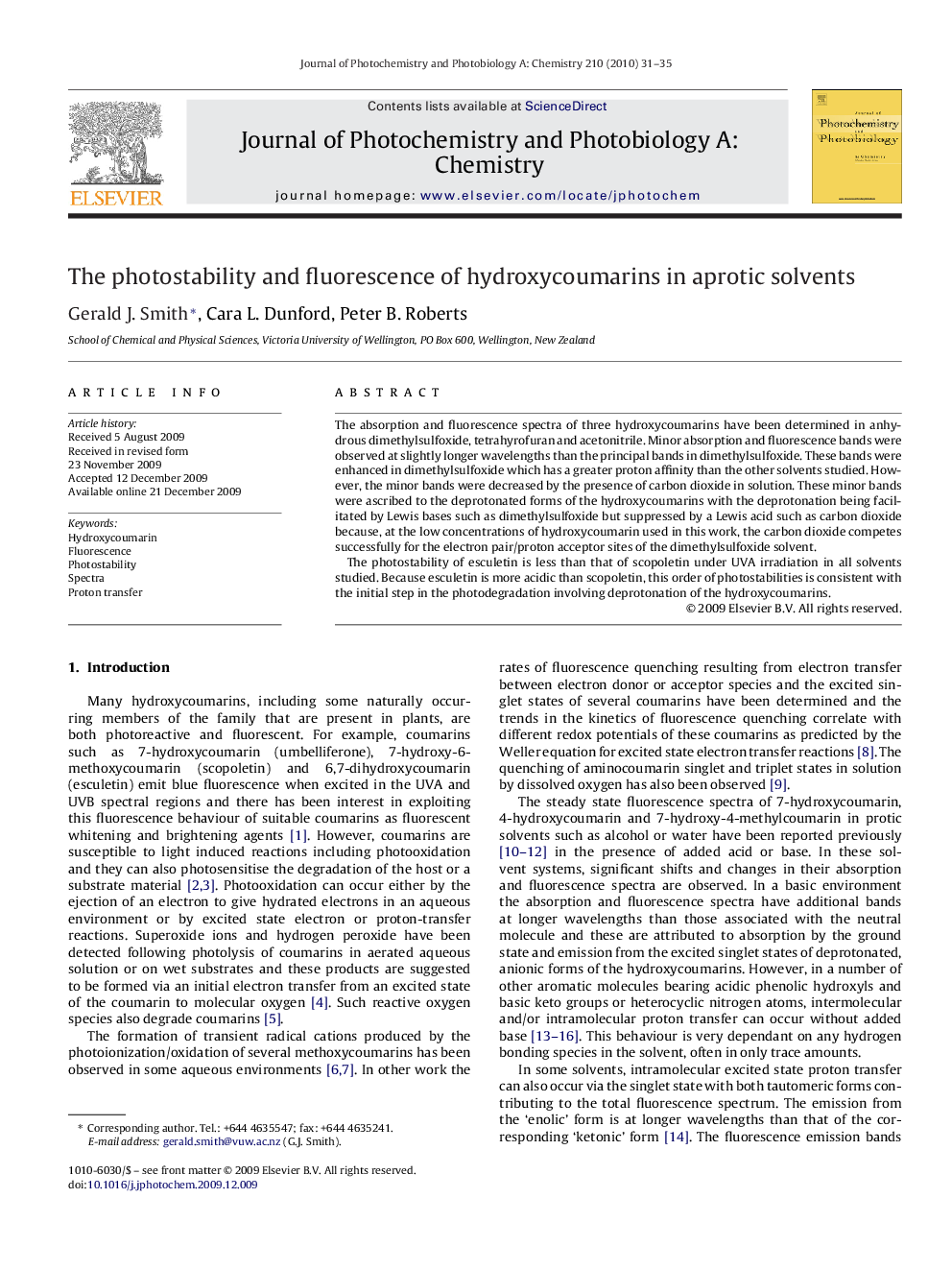| Article ID | Journal | Published Year | Pages | File Type |
|---|---|---|---|---|
| 27101 | Journal of Photochemistry and Photobiology A: Chemistry | 2010 | 5 Pages |
The absorption and fluorescence spectra of three hydroxycoumarins have been determined in anhydrous dimethylsulfoxide, tetrahyrofuran and acetonitrile. Minor absorption and fluorescence bands were observed at slightly longer wavelengths than the principal bands in dimethylsulfoxide. These bands were enhanced in dimethylsulfoxide which has a greater proton affinity than the other solvents studied. However, the minor bands were decreased by the presence of carbon dioxide in solution. These minor bands were ascribed to the deprotonated forms of the hydroxycoumarins with the deprotonation being facilitated by Lewis bases such as dimethylsulfoxide but suppressed by a Lewis acid such as carbon dioxide because, at the low concentrations of hydroxycoumarin used in this work, the carbon dioxide competes successfully for the electron pair/proton acceptor sites of the dimethylsulfoxide solvent.The photostability of esculetin is less than that of scopoletin under UVA irradiation in all solvents studied. Because esculetin is more acidic than scopoletin, this order of photostabilities is consistent with the initial step in the photodegradation involving deprotonation of the hydroxycoumarins.
